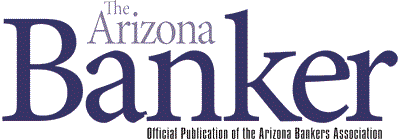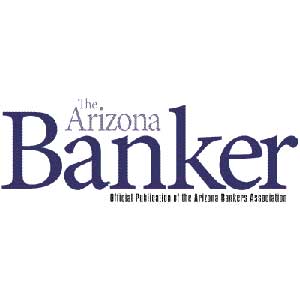By Nicholas Roesler, CRCM
This article originally appeared as the cover story in the January/February 2021 issue of ABA Bank Compliance magazine
In the aftermath of the tragic killing of George Floyd in Minneapolis, a racial justice movement has commanded society’s full attention. I know I’m not alone in feeling like these events made me forget that the world was and is still facing a global pandemic. Being geographically based in Minneapolis also undoubtedly affected how these events were hitting me personally and professionally. I’ve asked myself, “What’s next?” and “How will I be a positive vehicle for change?”
Compliance professionals who manage fair lending are depended upon to uphold a commitment to fairness that all reputable banks make to their customers, communities and employees. While building a robust, fair lending program and demonstrating compliance is not an easy task, merely avoiding unlawful credit discrimination doesn’t need to be the final destination. There is always more to do, and compliance officers overseeing fair lending can provide unique and powerful viewpoints, even beyond the specific confines of Regulation B or the Fair Housing Act. Speaking at the ABA Risk and Compliance Virtual Conference in July 2020, ABA President and CEO Rob Nichols emphasized this point, saying, “when it comes to ensuring equal opportunity and access to financial products and services, you are the ones who speak up when you see something happening that isn’t right. Never forget the critical role you play in making our industry stronger, safer and more equitable for all.”
Disparate impact
The issues and efforts of the current racial justice movement are multifaceted and complex. One of the central themes is anti-Black racism. While much of the immediate focus surrounds police misconduct and the criminal justice system, banking is also part of the broader range of issues. Fair lending compliance practitioners are well-versed in disparate impact, which occurs when a neutral policy causes a disproportionately negative impact on a prohibited basis that is not supported by a valid business justification or necessity.
The Color of Law by Richard Rothstein describes segregation by law and public policy (i.e., government), including housing issues and the overlap with mortgage lending such as when agencies openly refused to insure mortgages for African Americans, influenced appraisal standards by including terms like “inharmonious racial groups,” and created the infamous color-coded maps where neighborhoods with African Americans present were colored red, designating a neighborhood with the highest risk. There was also a downstream impact on private action segregation and redlining, such as restrictive racist covenants appearing in real estate property deeds across the country.
Despite progress through civil rights banking laws such as the Fair Housing Act and Equal Credit Opportunity Act, indicators of the lasting effects of historical redlining and discrimination remain. Black homeownership rates are almost as low now as they were when discrimination was legal. The census bureau data shows that in 1968, 41% of Black families owned their homes, while white homeownership was 66%. In the first quarter of 2020, the Black homeownership rate increased slightly to 44%, but was nearly 30% behind white households.
According to a report by Zillow that examined the impacts of the long-abandoned color-coded maps, the median home value in the neighborhoods that had been designated “best” had risen 230.8% to $640,238 between 1996 and 2018. In contrast, the median value in red-colored “hazardous” areas grew only 203.1%, to $276,199.
In addition to housing, legitimate race-neutral credit factors such as credit score, income, and wealth continue to show racial disparities. According to a 2019 report published by the Consumer Financial Protection Bureau, “the 2018 HMDA data shows that the credit scores of Black and Hispanic White applicants, on average, are lower than those of non-Hispanic White and Asian applicants overall and across all enhanced loan types. Additionally, there are higher percentages of Black and Hispanic White applicants whose credit scores fall on the low end of the distribution and fall below the common underwriting cutoff points.”
As for wealth, the disparities are very high. A typical white family’s net worth ($171,000) is nearly 10 times greater than that of the average Black family ($17,150). In a 2017 study, the Federal Reserve stated: “Wealth tends to increase with income because of higher levels of saving among higher-income families, and because of the feedback effect on higher incomes from the returns generated by accumulated assets.” This same study provided findings on the income gap. It found that in 2016, median incomes for white families were $61,200, while median incomes for Black and Hispanic families were $35,400.
Independently, the disparities described above are concerning and problematic enough; when considered simultaneously and along with the lasting impacts of redlining, the interrelated and multiplying effect demonstrate a vicious cycle in desperate need of attention. In cases where the risk of unlawful credit discrimination is mitigated through a business justification, compliance officers may want to go further to review within the context of wider corporate social responsibility, conduct or ethics lens.
Special Purpose Credit Programs
Regulation B §1002.8 is dedicated to Special Purpose Credit Programs, intended to promote access to credit through lending products and programs designed to meet special social needs and benefit economically disadvantaged groups. This includes meeting the needs of a prohibited basis group that is being underserved in the market. These programs allow collecting prohibited basis characteristics, such as race, to ensure the credit programs are appropriately targeted to intended prohibited basis group applicants. While companies across various industries can make commitments through philanthropy, diversity initiatives or public statements denouncing racism, a Special Purpose Credit Program is clearly one fairness-boosting opportunity unique to the banking industry.
The basic components of a Special Purpose Credit Program include demonstrating the unmet need, drafting a written plan to lay out the specifics of how the program will operate, and engaging with whichever regulator has responsibility for overseeing Regulation B for your institution. The commentary to Regulation B clarifies that “a for-profit organization must determine that the program will benefit a class of people who would otherwise be denied credit or would receive it on less favorable terms. This determination can be based on a broad analysis using the organization’s research or data from outside sources, including governmental reports and studies.”
In its summer 2016 Supervisory Highlights, the CFPB set forth observations regarding credit decisions made pursuant to the terms of programs that for-profit institutions have described as Special Purpose Credit Programs. Two examples observed by the CFPB included:
- Small business lending programs providing credit to minority-owned businesses that were otherwise more likely to be denied credit than non-minority owned firms.
- Mortgage lending programs with special rates and terms for individuals with income below certain thresholds or, for those buying property in areas where the median income was below certain thresholds, which otherwise would have resulted either in denial of mortgage credit or in higher-priced mortgage credit.
The CFPB stated it “generally takes a favorable view of conscientious efforts that institutions may undertake to develop special-purpose credit programs to promote extensions of credit to any class of persons who would otherwise be denied credit or would receive it on less favorable terms.”
The CFPB also recently published an article on July 31, 2020, reminding creditors of the availability and opportunity related to Special Purpose Credit Programs.
Responsible Innovation
In some ways, it’s difficult for banks to make loans that meet safety and soundness standards without using commonly accepted creditworthiness factors — such as a credit score, income, net worth or collateral value — that have been historically correlated with racial groups. The use of certain types of data has been shown to have a disparate impact on Black applicants, even though these data types can still be fair-lending compliant if accompanied by a valid business necessity. Thus, the resulting outcomes of reduced access to credit for Blacks are in effect perpetuated. Regulators have encouraged responsible use of alternative data and have highlighted a “success story” involving machine learning modeling techniques which increased access to credit while still being fair.
A Special Purpose Credit Program, used in conjunction with alternative data (e.g., perhaps an alternative to using a traditional credit score), or machine learning while adding risks, complexity and uncertainty that comes from “unproven” techniques, offers an exciting possibility to explore alongside your regulators. Establishing principles regarding the ethical use of data is another action that can have a far-reaching impact, given that good use of data is foundational to responsible innovation.
Proxy Methodology: Filling a Crucial Data Void
With the intent of protecting civil rights, Regulation B prohibits a creditor from asking for, collecting, recording or otherwise retaining prohibited basis group information, except in the case of residential real estate loans or other limited cases (e.g., Special Purpose Credit Program, Self-Testing). Despite this prohibition, banks are still expected to oversee and manage fair lending risk across all credit types.
There’s practically no other choice to fill the void when performing data-driven fair lending analysis of disparate treatment or disparate impact for non-mortgage products with prohibited data collection. There’s practically no other choice but to rely upon a proxy to designate an applicant’s race. The use of surrogates for an applicant’s prohibited basis group characteristics is referenced in the long-standing interagency fair lending examination procedures. For banks regulated by the CFPB, the Bayesian improved surname geocoding or BISG, proxy method — which combines geography- and surname-based information — is most commonly used for fair lending analysis.
There is still room for some customization in how to apply a proxy to real-world situations. This makes the evaluation of your bank’s proxy methodology — to ensure sound support and justification — a fair lending imperative to consider the scope of consumer and business credit products and activities. The CFPB’s planned rulemaking under Section 1071 of the Dodd-Frank Act will require financial institutions to collect, report, and make public certain information concerning credit applications made by women-owned, minority-owned, and small businesses.

Exploring Mystery Shopping
Another way to root out disparate treatment is by using mystery shoppers. As a part of a 2016 joint fair lending action by CFPB and the Department of Justice, the CFPB disclosed its first use of “mystery shopping” and noted that other government agencies and housing organizations “had used testers for decades as a method of identifying discrimination.” In July 2020, a study was released by the National Community Reinvestment Coalition regarding Paycheck Protection Program loans that used matched-pair testing, and it noted past matched-pair “mystery shopper” tests were conducted by the NCRC in 2017, 2019 and earlier in 2020. The twist on this study was that mystery shopping was conducted over the phone.
ABA Resources: Diversity, Equity and Inclusion
ABA is committed to helping banks of all sizes build diverse, equitable and inclusive workplaces that best represent the communities they serve. Our members have access to training, industry-leading practices and other dedicated resources to help them achieve their DEI goals. Learn more at https://www.aba.com/banking-topics/operations/diversity-equity-inclusion.
Mystery shopping could be a useful tool to detect inconsistencies that point to potential fair lending risks related to racially correlated mistreatment. However, there are limitations, costs, scoping and administration complexities, and other uncontrolled factors that arguably diminish the conclusiveness of results with respect to unlawful credit discrimination. There are also limited examples of banking regulators using mystery shopping for fair lending examinations, appearing instead to be a supplemental investigative measure used only in extreme cases. Before considering whether mystery shopping may be an appropriate addition to your bank’s fair lending program, you might find value in first exploring other ways to strengthen existing controls and oversight of pre-application risks, such as through review of branch procedures, banker interviews, branch visits, complaint monitoring and customer experience metrics.
Final Thoughts
Over the years, I’ve heard people say many times that compliance can be a thankless job. Let me take the opportunity to say “thank you” to all the professionals who work day-in and day-out tirelessly to achieve compliance and to do what is right. As banks continue to renew commitments and assess what more can be done to make more progress to increase fairness, let’s continue to look for opportunities to strengthen our fair and responsible banking programs, as well as to take advantage of synergies with initiatives occurring among the areas of diversity, human resources, Community Reinvestment Act, ethics, conduct, innovation and corporate social responsibility.
Regulatory agencies have multiple initiatives and efforts to improve diversity, equity and inclusion, such as the CFPB’s request for information on ways to prevent credit discrimination and build a more inclusive financial system. The RFI covers a lot of ground, including disparate impact, limited English proficiency, Special Purpose Credit Programs, affirmative advertising, small business lending, sexual orientation and gender identity discrimination, federal preemption of state law, treatment of public assistance income, artificial intelligence and machine learning and adverse action notices. Essentially, the CFPB asks whether it should provide additional clarity, guidance, or interpretation within the context of the Equal Credit Opportunity Act and Regulation B on these topics. This type of regulatory engagement is encouraging and highlights another opportunity for public and private sectors to work alongside one another to make positive change.
As Martin Luther King, Jr. said: “The time is always right to do what is right.”










